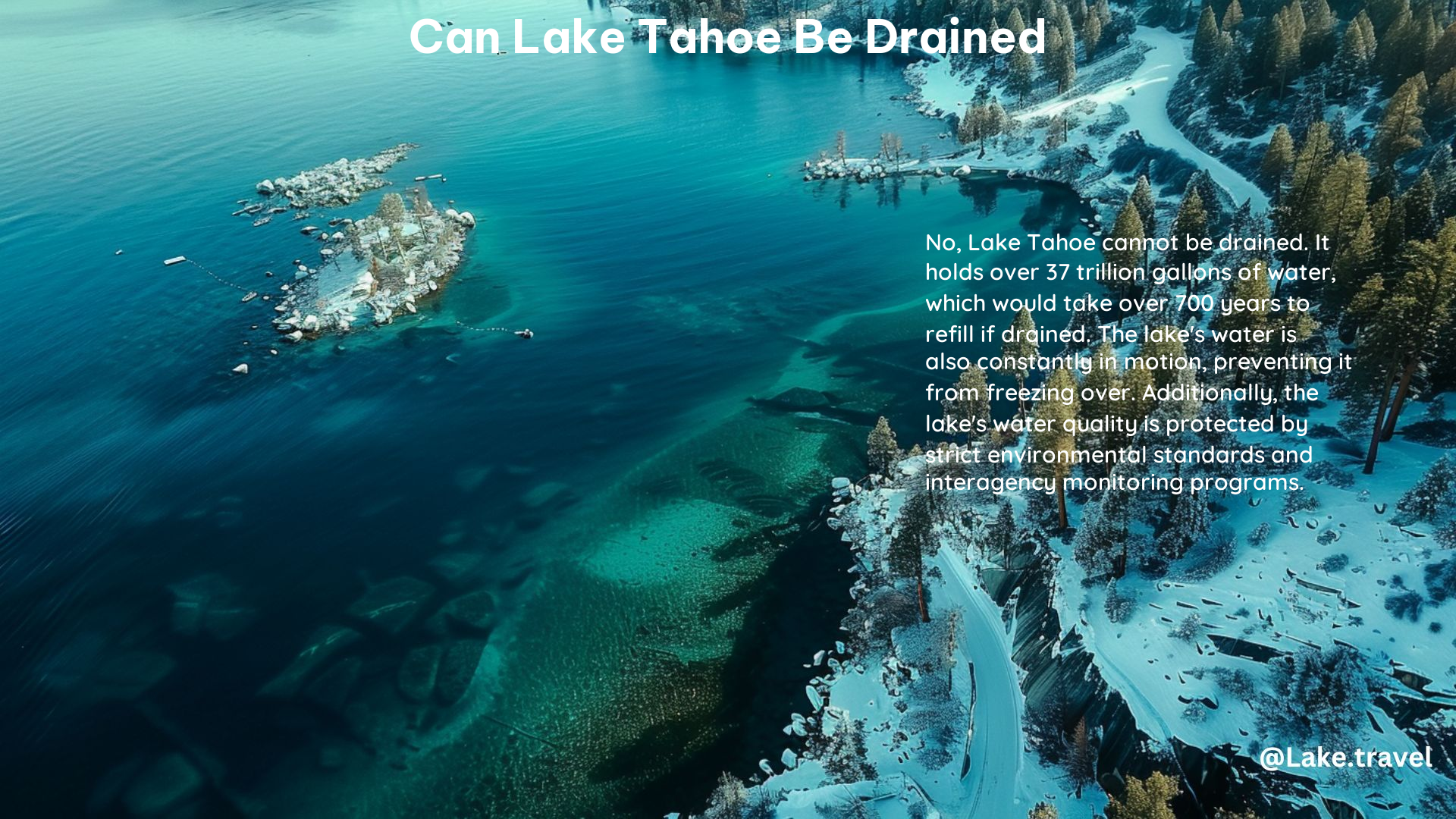Lake Tahoe, a freshwater lake located in the Sierra Nevada mountains, is a significant environmental and recreational resource. The question of whether Lake Tahoe can be drained is a complex one, involving both practical and environmental considerations.
Can Lake Tahoe Be Drained?
Technically, it is possible to drain Lake Tahoe, but it would be a massive and highly impractical undertaking. The lake holds approximately 37 trillion gallons of water, which would require an enormous amount of time and resources to drain completely. If drained, the lake could cover a flat area the size of California to a depth of 14 inches, but it would take over 700 years to refill naturally.
Lake Tahoe Water Amount

Lake Tahoe contains approximately 37 trillion gallons of water, making it one of the largest freshwater lakes in the United States. The lake’s water level is maintained by a delicate balance of inflow from surrounding rivers and streams and outflow through the Truckee River. The water level can fluctuate depending on factors such as snowmelt, rainfall, and evaporation.
Drain Lake Tahoe
Draining Lake Tahoe would have significant environmental and ecological impacts. The lake supports a diverse range of aquatic life, including fish and other aquatic species. Draining the lake would disrupt the habitat and potentially lead to the extinction of some species. Additionally, the lake’s water clarity and quality would be severely impacted, as the lake’s natural filtering systems would be disrupted.
Lake Tahoe Refill Time
If Lake Tahoe were drained, it would take over 700 years to refill naturally, assuming no human intervention. This is due to the lake’s massive size and the limited inflow from surrounding rivers and streams.
Environmental Concerns
Lake Tahoe faces several environmental challenges, including the loss of water clarity, the impact of climate change, and the introduction of non-native species. These issues are being addressed through various conservation efforts, including the Lake Tahoe Environmental Improvement Program (EIP), which aims to restore the lake’s clarity and environment.
Conservation Efforts
Several organizations and initiatives are working to protect Lake Tahoe’s environment and ecosystems. These include the League to Save Lake Tahoe, the Tahoe Fund, and the California Tahoe Conservancy, which are involved in efforts to restore wetlands, rivers, and wildlife habitats, as well as to reduce pollution and protect the lake’s clarity.
References
- Tahoe’s Best. (n.d.). Lake Tahoe Forest Facts. Retrieved from https://www.tahoesbest.com/camping/forest_facts.htm
- Tahoe Environmental Research Center. (n.d.). Environmental Problems Facing Lake Tahoe. Retrieved from https://tahoe.ucdavis.edu/sites/g/files/dgvnsk4286/files/inline-files/%285%29%20Docent%20Manual%20Chapter%204%20-%20Science%20%26%20Research.pdf
- City of South Lake Tahoe. (n.d.). Stormwater Program. Retrieved from https://www.cityofslt.us/342/Stormwater-Program
- Keep Tahoe Blue. (2024). March 2024 Advocacy Update. Retrieved from https://www.keeptahoeblue.org/news/march-2024-advocacy-update-2/
- Reno Gazette-Journal. (2024). April Fools’ Day pranks pulled by Reno, Sparks and Lake Tahoe. Retrieved from https://www.rgj.com/story/life/2024/04/01/reno-sparks-lake-tahoe-april-fools-day-pranks/73170880007/.
